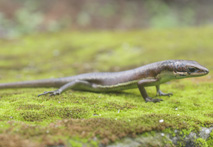Abstract
The subfamily Carpophilinae, in particular the genus Carpophilus Stephens, represents one of the most speciose lineages within Nitidulidae. The subfamily is comprised of more than 250 described species that are found worldwide in every habitable region, and have been transported by man in stored products to remote islands and archipelagos (Ewing & Cline 2005; Parsons 1943). The ubiquitous Carpophilus dimidiatus (L.) is an example of a cosmopolitan species that has been reported from every continent except Antarctica, but likely has been transported there as well. Members of Carpophilinae are well recognized by their abbreviated elytra, compact bodies, and distinct three-segmented antennal club. Many taxa are present in fermenting food products and dried goods. Some members are also commonly found in flowering plants such as cacti, cycads, and agricultural plants such as atemoya (a hybrid of sugar-apple and cherimoya) (Nagel et al. 1989).
References
Ewing, C.P. & Cline, A.R. (2005) Key to adventive sap beetles (Coleoptera: Nitidulidae) in Hawaii, with notes on records and habits. The Coleopterists Bulletin, 59 (2), 167–183.
https://doi.org/10.1649/736Henshaw, S. (1885) List of the Coleoptera of America, North of Mexico. American Entomological Society, Philadelphia, 256 pp.
https://doi.org/10.5962/bhl.title.13151Kirejtshuk, A.G. (1997) New Palearctic nitidulid beetles, with notes on synonomy and systematic position of some species (Coleoptera: Nitidulidae). Zoosystematica Rossica, 6, 255–268.
Kirejtshuk, A.G. (2008) A current generic classification of sap beetles (Coleoptera, Nitidulidae). Zoosystematica Rossica, 17 (1), 107–122.
LeConte, J.L. (1858) Description of new species of Coleoptera, chiefly collected by the United States and Mexican Boundary Comission, under Major W.H. Emory, U.S.A. Proceedings of the Academy of Natural Sciences of Philadelphia, 10, 59–89.
LeConte, J.L. (1859) The Coleoptera of Kansas and eastern New Mexico. Smithsonian Contributions to Knowledge, 2, 1–58.
Mawdsley, J.R. (1993) The entomological collection of Thomas Say. Psyche, 100, 163–171.
https://doi.org/10.1155/1993/59616Melsheimer, F.E. (1844) Descriptions of new species of Coleoptera of the United States. Proceedings of the Academy of Natural Sciences of Philadelphia, 2, 98–118.
Murray, A. (1864) Monograph of the family Nitidulariae. Transactions of the Linnean Society of London, 24, 211–414.
https://doi.org/10.1111/j.1096-3642.1863.tb00163.xNagel, J., Peña, J.E. & Habeck, D. (1989) Insect pollination of atemoya in Florida. The Florida Entomologist, 72 (1), 207–211.
https://doi.org/10.2307/3494985Parsons, C.T. (1943) A revision of Nearctic Nitidulidae (Coleoptera). Bulletin of the Museum of Comparative Zoology, 92, 121–273.
Reitter, E. (1873) Systematische Eintheilung der Nitidularian. Verhandlungen des naturforschenden Vereines in Brünn, 12, 5–194.
Say, T. (1823) Descriptions of coleopterous insects collected in the late expedition to the Rocky Mountains, performed by order of Mr. Calhoun, Secretary of War, under the command of Major Long. Journal of the Academy of Natural Sciences of Philadelphia, 3 (1), 139–331.
Say, T. (1825) Descriptions of new species of coleopterous insects inhabiting the United States. Journal of the Academy of Natural Sciences of Philadelphia, 5 (1), 160–204.
Torres, H.H. (2013) Escarabajos de la savia (Coleoptera: Nitidulidae) de Coahuila, Mexico. Master’s thesis. Universidad Autonoma Agraria, Buenavista, Saltillo, Coahuila, 102 pp.

